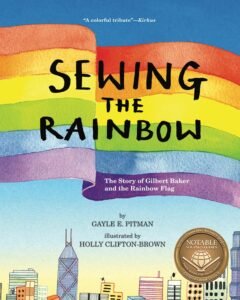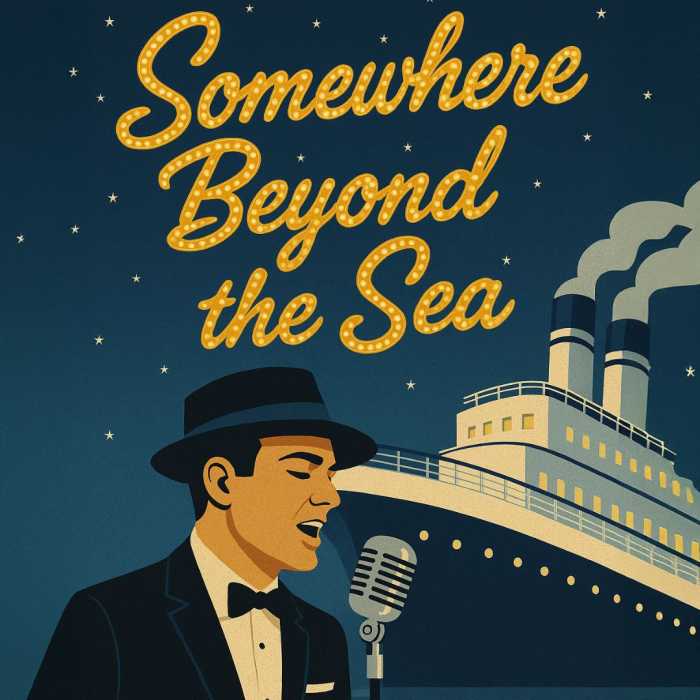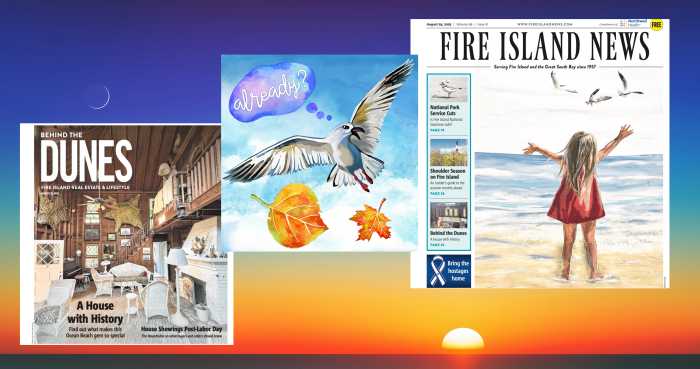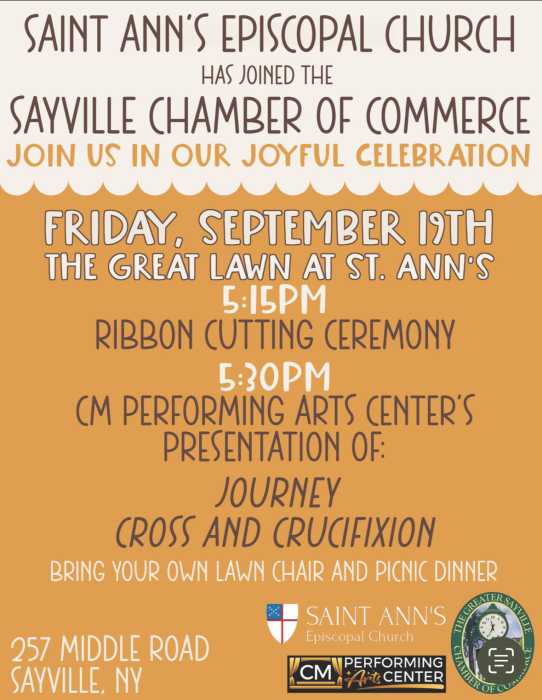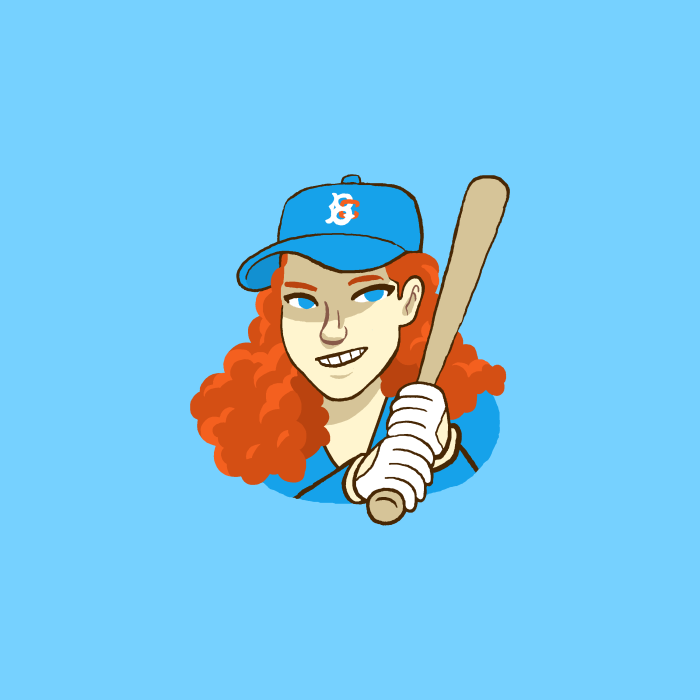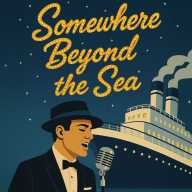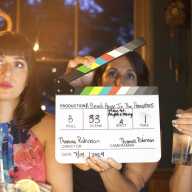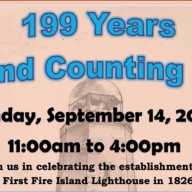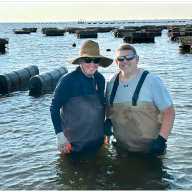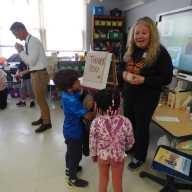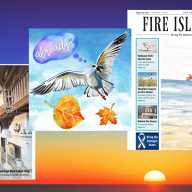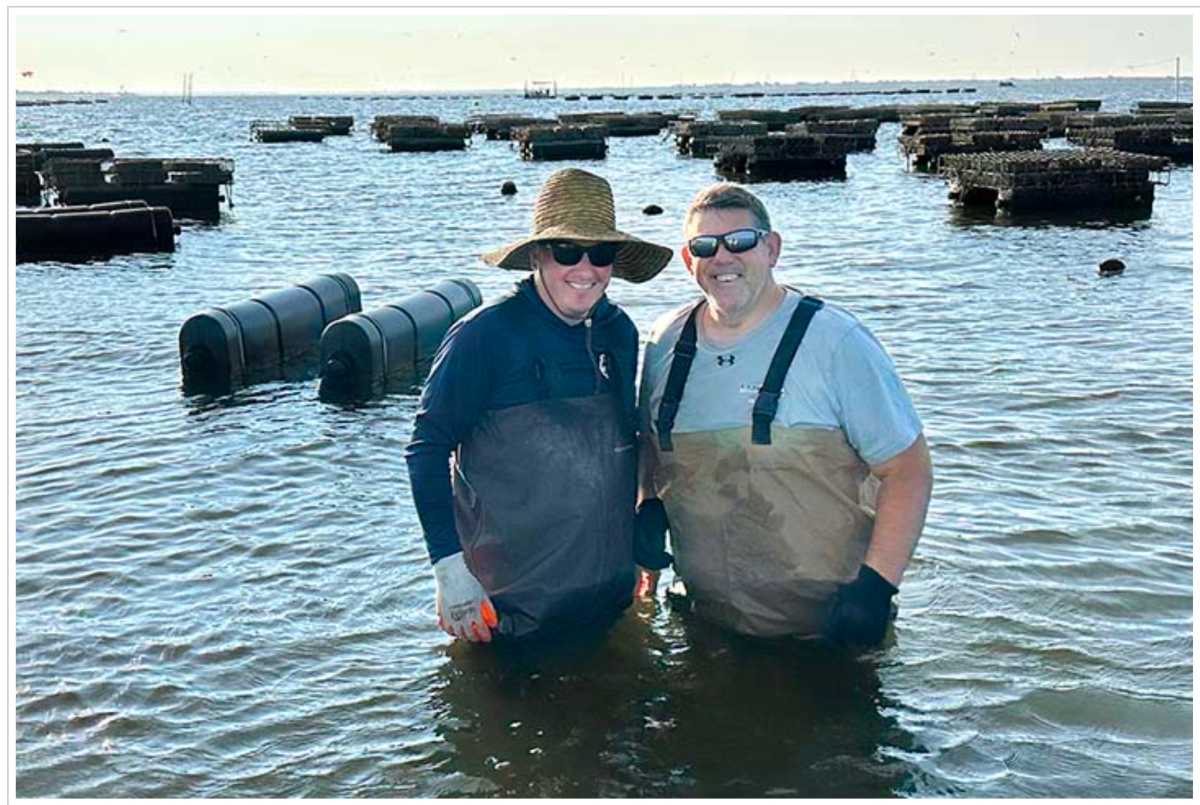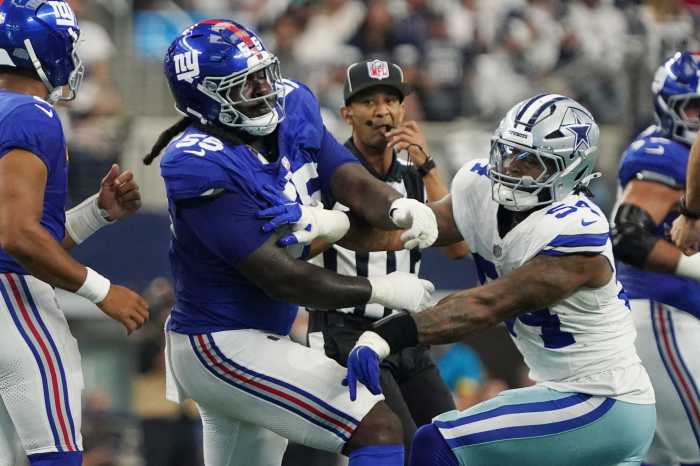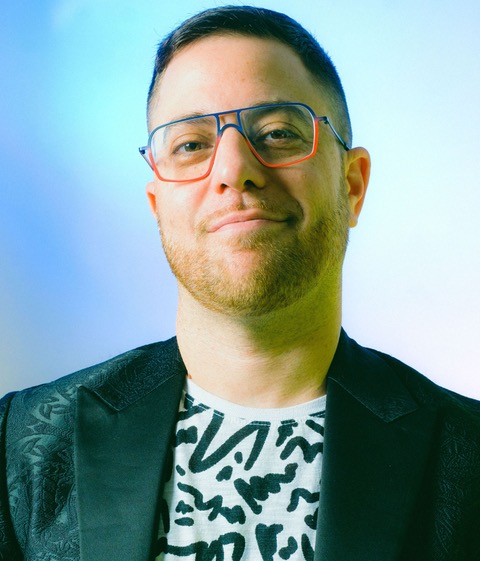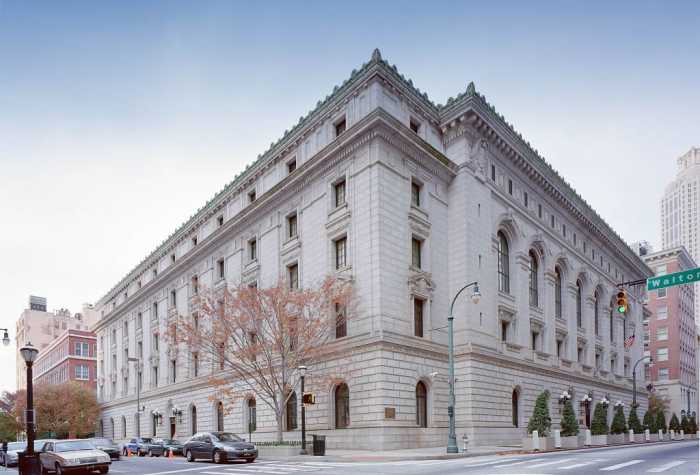“Sewing the Rainbow” The Story of Gilbert Baker and the Rainbow Flag By Gayle E. Pitman 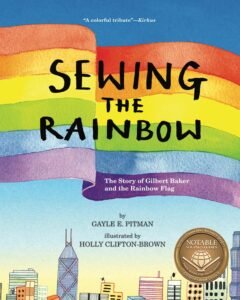 Illustrated by Holly Clifton-Brown Magination Press $9.99 Children 4-8“Sewing the Rainbow” is the illustrated story of Gilbert Baker, gay man and activist, who in 1978 flew his rainbow flag for the first time, the banner that became the worldwide symbol of the LGBTQ community. The book takes readers to a Kansas town where “everything was gray and flat” and contrasts it with a little boy named Gilbert who was “full of color sparkle and glitter.” Gilbert is most at home in his grandmother’s colorful clothing store. Illustrator Holly Clifton- Brown has her happily sewing as her grandson draws beautiful gowns and costumes he dreams of bringing to life. Mr. Baker does not appreciate his son’s artistic gifts and one spread has him angrily ripping up his drawings and taking away his art supplies. Surrounded by more boyish building blocks and Erector sets, sports gear and slingshots, rather than his drawing pad and pencils, Gilbert’s “glittery personality fades.”
Illustrated by Holly Clifton-Brown Magination Press $9.99 Children 4-8“Sewing the Rainbow” is the illustrated story of Gilbert Baker, gay man and activist, who in 1978 flew his rainbow flag for the first time, the banner that became the worldwide symbol of the LGBTQ community. The book takes readers to a Kansas town where “everything was gray and flat” and contrasts it with a little boy named Gilbert who was “full of color sparkle and glitter.” Gilbert is most at home in his grandmother’s colorful clothing store. Illustrator Holly Clifton- Brown has her happily sewing as her grandson draws beautiful gowns and costumes he dreams of bringing to life. Mr. Baker does not appreciate his son’s artistic gifts and one spread has him angrily ripping up his drawings and taking away his art supplies. Surrounded by more boyish building blocks and Erector sets, sports gear and slingshots, rather than his drawing pad and pencils, Gilbert’s “glittery personality fades.”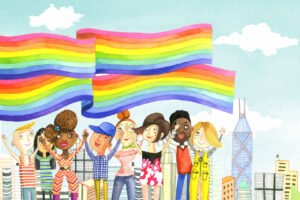 The storyline skips ahead to when Gilbert is 18 and he gets a draft notice that knocks “every bit of sparkle out of him.” Army life does not work out well for the young draftee. He doesn’t want to carry a gun; they call him “ugly names.” He’s sent to San Francisco, “where he would never have to pick up a gun again.” Clifton-Brown amps up her pallet with vivid colors when Gilbert gets to the Bay Area. She does a fine job matching his mood with circular and buoyant drawings capturing the “MAGIC” he experiences when he arrives there. He can finally breathe and be his “colorful, sparkly, glittery self.” Gilbert teaches himself to sew the elaborate costumes he imagined and drew as a child. Fuchsias, purples and turquoise, trumpet skirts and flounces take center stage in his outfits for Mama José and Sylvester (not spelled out in the text but explained in the extensive author’s notes, they are drag performers).There were other instances where I had to refer to the notes in order to make sense of the text, e.g. “the constant reminder of evil,” Gilbert discusses with his friend Harvey [Milk]. Reminder of evil? I was confused till I read Pitman’s explanation that the pink triangle that identified the gay community during the Holocaust came from Nazi Germany. Bolts of fabric, pails of paints, trashcans used for dyeing, washing machines for rinsing the panels of the flag, give young readers the idea of the rainbow flag in production. “Today, the rainbow flag is everywhere…” and whenever you see one “you’ll know that it’s okay to be your colorful, sparkly, glittery self.”
The storyline skips ahead to when Gilbert is 18 and he gets a draft notice that knocks “every bit of sparkle out of him.” Army life does not work out well for the young draftee. He doesn’t want to carry a gun; they call him “ugly names.” He’s sent to San Francisco, “where he would never have to pick up a gun again.” Clifton-Brown amps up her pallet with vivid colors when Gilbert gets to the Bay Area. She does a fine job matching his mood with circular and buoyant drawings capturing the “MAGIC” he experiences when he arrives there. He can finally breathe and be his “colorful, sparkly, glittery self.” Gilbert teaches himself to sew the elaborate costumes he imagined and drew as a child. Fuchsias, purples and turquoise, trumpet skirts and flounces take center stage in his outfits for Mama José and Sylvester (not spelled out in the text but explained in the extensive author’s notes, they are drag performers).There were other instances where I had to refer to the notes in order to make sense of the text, e.g. “the constant reminder of evil,” Gilbert discusses with his friend Harvey [Milk]. Reminder of evil? I was confused till I read Pitman’s explanation that the pink triangle that identified the gay community during the Holocaust came from Nazi Germany. Bolts of fabric, pails of paints, trashcans used for dyeing, washing machines for rinsing the panels of the flag, give young readers the idea of the rainbow flag in production. “Today, the rainbow flag is everywhere…” and whenever you see one “you’ll know that it’s okay to be your colorful, sparkly, glittery self.”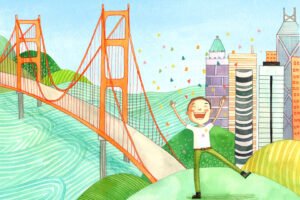 The author uses iterations of “colorful, sparkly, and glittery” six times, the word gay not once. Gilbert Baker was gay and he was ridiculed and humiliated for it. He made the pride flag to take away the shame and to celebrate difference. If this book is a shout-out to youngsters to be themselves, whatever that self might be – there are books for young readers that do address the LGBTQ community – instead of skirting the issue (no pun intended), Pitman could have been more direct about Baker’s sexuality. That would have given the book some real sparkle!
The author uses iterations of “colorful, sparkly, and glittery” six times, the word gay not once. Gilbert Baker was gay and he was ridiculed and humiliated for it. He made the pride flag to take away the shame and to celebrate difference. If this book is a shout-out to youngsters to be themselves, whatever that self might be – there are books for young readers that do address the LGBTQ community – instead of skirting the issue (no pun intended), Pitman could have been more direct about Baker’s sexuality. That would have given the book some real sparkle!
Review: “Sewing the Rainbow”
